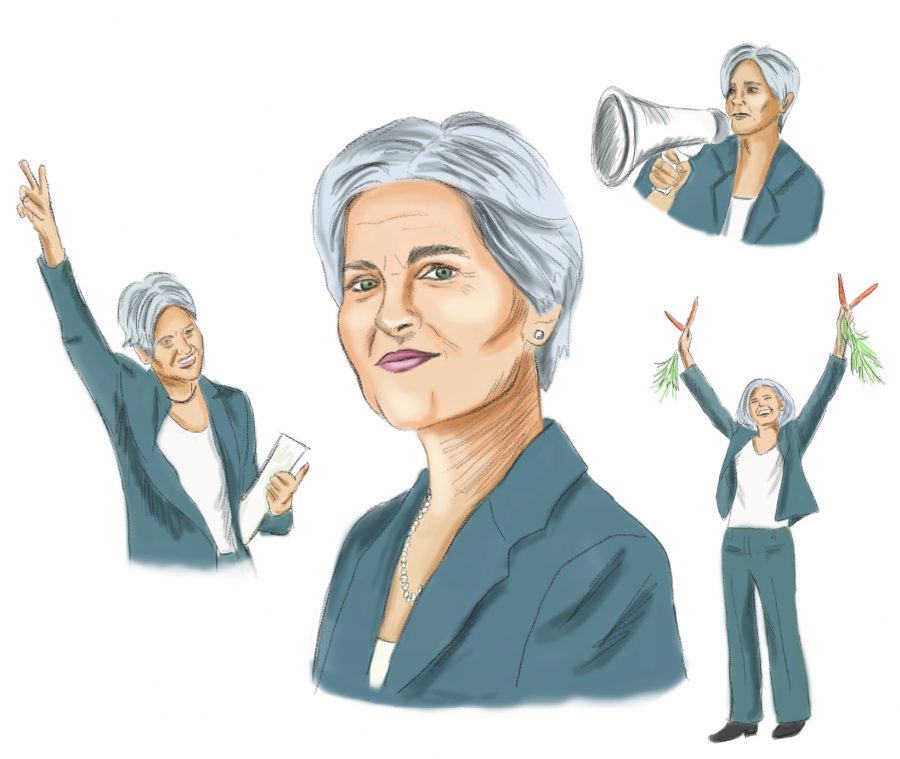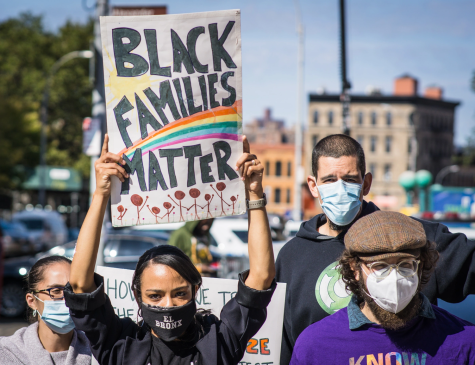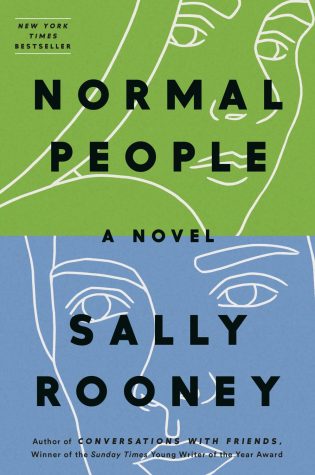Green vote in a blue state
November 2, 2016
On Tuesday, voters will blacken the bubble that will determine what life in the U.S. will look like for the next four years: a dismal picture under Democratic nominee Hillary Clinton and a downright horrifying one under Republican nominee Donald Trump.
I am 23 years old and this is the first year I will cast my ballot for the next president of the United States, but I’m far from empowered. I don’t feel like either candidate has my best interests at heart.
Trump’s entire campaign has been built on scapegoating, xenophobia and sexism. His dismissal of a 2005 conversation with Billy Bush on Access Hollywood where he bragged about grabbing women by the p—- as “locker room talk” was degrading, insulting and deplorable.
Clinton, on the other hand, is hardly the poster child of America: she has 33,000 missing emails and a track record for being the ventriloquist of corporate America.
To be quite honest, my faith in the political system disintegrated when Vermont Sen. Bernie Sanders conceded to Clinton in July.
But it’s not over yet. Rising from the ashes of a snuffed Sanders campaign emerges an unexpected option: Green Party nominee Jill Stein, who takes up where Sanders left off on issues like reproductive freedom, dismantling the big banking system and raising taxes on the wealthy.
Stein’s campaign didn’t come out of left field. She campaigned in the 2012 election representing the Green Party, receiving 469,501 votes, according to news site The Daily Beast. She announced her candidacy for the 2016 election on June 22, 2015, reports Graphiq, a digital data compilation website. While she’s managed to stay out of the spotlight until now, her 17-month campaign is longer that of all of the other candidates currently running for president.
Stein represents The Green Party of the United States, an independent political party that denounces the two-party system and advocates for peace and nonviolence, ecological wisdom, grassroots democracy and social justice, according to the GPUS website.
While Clinton and Trump have managed to polarize the country, it seems that Stein, a physician and environmental health advocate from Massachussetts, couldn’t have come at a more opportune moment. Former Sanders supporters and disenfranchised voters turning from both Clinton and Trump are beginning to scramble desperately for a plan C. It’s possible that Stein could provide the escape hatch.
“People have been politically traumatized,” said Stein at a Boston rally on Sunday. “I feel like I’m a political therapist, and I help people break up with an abusive relationship and get their lives back.”
Stein vows to “turn the tide on climate change, revive the economy and make wars for oil obsolete,” while creating 20 million new jobs by transitioning to 100 percent clean, renewable energy by 2030, according to Stein’s campaign website. She also aims to establish a “Medicare for All” single-payer public health program, require the labeling of GMO’s, guarantee free public education from preschool to university and set a $15 minimum wage.
Sanders supporters will find Stein’s platform familiar and probably slightly more idealistic. Graphiq graded her as even more liberal than Sanders on a number of issues.
Others like The Daily Beast have called her campaign goals unrealistic and criticised her investment portfolio, which was made public with the release of her 2015 Federal Tax Returns. Stein has invested millions in the Vanguard 500 Fund, which invests in energy companies like Chevron and Exxon, the TIAA-CREF Equity Index, which has holdings in big banks like JP Morgan and Chase and pharmaceutical company Merck, despite having denounced the carbon, financial and pharmaceutical industries.
But many like myself aren’t voting for Stein based on issues alone, but rather a desire to throw a wrench in a flawed two-party system. Scott McLarty, media coordinator for the GPUS told the Pioneer that the system is flawed because in many states Democratic and Republican legislators have manipulated the rules to favor their own candidate and obstruct alternative parties.
“We have two of the most unpopular candidates ever,” said McLarty. “The Republican Party has been taken over by people who are impressed with someone like Trump, whose program is incoherent and irrational. And then you have Hillary Clinton who has a background of misrepresenting herself and of secret speeches to Goldman Sachs on Wall Street, and is also a supporter of military aggression in other countries. We shouldn’t have to choose between two awful candidates like that.”
McLarty explained that the fact that the two Democratic and Republican nominees only participate in the main presidential debates is an example of a flawed election system.
Also, in certain states, third party candidates are required to collect more signatures to get on the ballot than their Democratic and Republican opponents. In Pennsylvania this year, Democratic and Republican candidates needed 2,000 signatures, however Stein was required to hand in 23,000, according to McLarty.
A survey conducted in May 2010 by the Wall Street Journal in collaboration with NBC, revealed that 83 percent of Americans believe that the two-party system is flawed.
Despite these challenges, McLarty said that in 2016 the GPUS has taken on the ballot in more states than any presidential election in history. Stein is on the ballot in 44 states and in three others, you can write in her name. In three other states, however, the laws are so strict you won’t find hers or Libertarian party nominee Gary Johnson’s names on the ballot and can’t write them in either.
Third parties are important because they force the two major parties to adapt their campaigns according to the needs of the people, the GPUS states. Clinton’s campaign, which amended to include some of Sanders’ most popular initiatives like affordable higher education, is a prime example.
Stein is currently pulling 2.1 percent in the polls, according to RealClear Politics, but she will need to receive five percent of the popular vote in order to qualify for millions of dollars in federal funding in the next election in 2020. McLarty explained that this is important because it will help the GPUS “make the leap from a minor party to a major party that can offer real competition.”
Stein won’t win the 2016 election, that much is clear. California is a notoriously “blue” state and the Electoral College will vote Clinton, the popular vote.
A vote for Stein does not equal a vote for Trump by default. A vote for Clinton won’t make much of an impact but a vote for Stein will truly count. There are other reasons to vote for a third party candidate besides choosing the next president. In this case, for myself and others, a vote for Stein is a protest vote against a rigged two-party election system, or in McLarty’s words, “a declaration of what one stands for.”
“If democracy has any meaning, then people should be able to vote for whichever candidate represents their ideals and interests and needs the best without being told that only two candidates are legitimate,” he said.

















